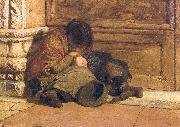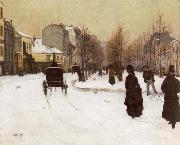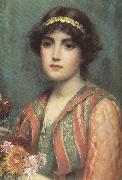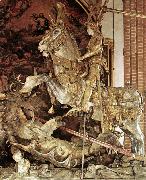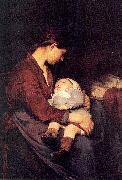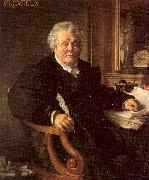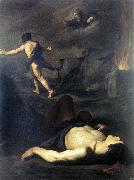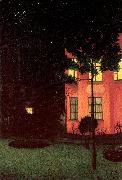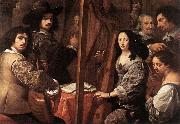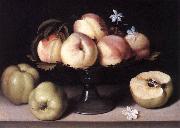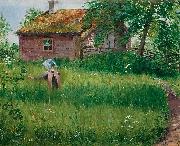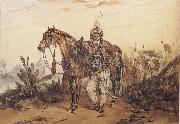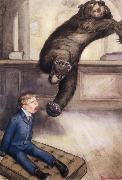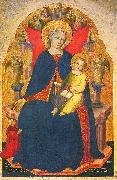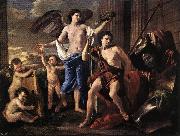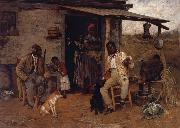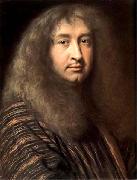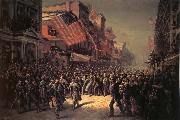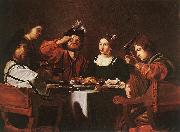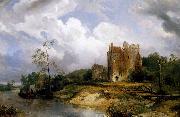|
|
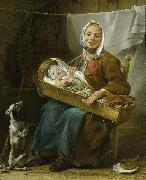 |
Noel Halle
|
|
Noël Halle (2 September 1711, Paris - 5 June 1781, Paris) was a French painter, draftsman and printmaker. He was born into a family of artists, the son of Claude-Guy Halle.
Halle took the Prix de Rome in 1736. Among his works are Ancient Rome-related The Death of Seneca, Cornelia, Mother of the Gracchi and The Justice of Trajan.
|
|
|
|
|
|
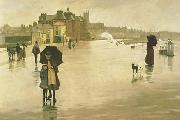 |
Norman Garstin
|
|
(28 August 1847 ?C 22 June 1926) was an Irish artist associated with the Newlyn School of painters.
He was born in Caherconlish, Co. Limerick, Ireland, and was involved in various professions such as journalism and gold mining in South Africa. In 1885 he befriended members of the Newlyn School and settled there a year later, moving to nearby Penzance in 1890.
The Rain it Raineth Every Day 1889His work consisted primarily of small oil panels in the plein air style, something he had picked up from the French Impressionists such as Edouard Manet and Edgar Degas. |
|
|
|
|
|
|
|
|
|
|
|
|
|
|
|
|
|
|
|
|
|
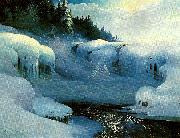 |
olof w. nilsson
|
|
1868-1956
född 12 oktober 1868 Norra Råda, Värmlands län, död 23 februari 1956, svensk konstnär, främst verksam i Karlstad, i Göteborgsregionen och i Lappland.
Nilsson deltog i det inre utsmyckandet av ett antal prestigefulla byggnader i Göteborg men gjorde sig även bekant som skicklig oljemålare med motiv hämtade såväl från Värmland och västgötabygden som från Lappland. Han är i dag främst ihågkommen som "fjällmålare". Även "isiga" landskap. |
|
|
|
 |
Panfilo Nuvolone
|
|
(1581-1651) was an Italian painter of the Mannerist period, who painted both religious and still life topics, active in Cremona and Mantua.
Born to a Mantuan gentleman, he was the father of a family of Cremonese painters. In that town, he apprenticed with Giovanni Battista Trotti (known as il Malosso). Afterwards he moved to Milan, where frescoe church ceilings, and painted altarpieces and still lifes.
One of his few documented still lifes depict a bowl of peaches, and recalls the near-contemporary paintings of fruit bowls in Milan, including the 1594-98 painting in the Ambrosiana by Caravaggio and similarly themed paintings by Fede Galizia. His son, Carlo Francesco Nuvolone, also a prominent in painter in Lombardy. Panfilo's younger son Giuseppe Nuvolone also a painter. Giuseppe's son Carlo was a mediocre quadratura specialist active mainly around Cremona. |
|
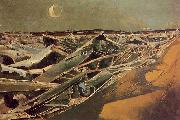 |
Paul Nash
|
|
British
1889-1946
Paul Nash Location |
|
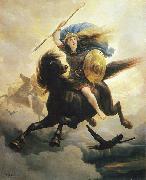 |
Peter Nicolai Arbo
|
|
(June 18, 1831 - October 14, 1892) was a Norwegian painter, who specialized in painting motifs from Norwegian history and images from Norse mythology. He is above all noted for Åsgardsreien, a dramatic motif based on a Norwegian folk legend and Valkyrie, which depicts a female figure from Norse mythology.
Peter Nicolai Arbo grew up at Gulskogen Manor in Gulskogen, a borough in Drammen, Norway. He was the son of headmaster Christian Fredrik Arbo (1791-1868) and his wife Marie Christiane von Rosen. His brother Carl Oscar Eugen Arbo was a military medical doctor and a pioneer in Norwegian anthropologic studies. Arbo's childhood home, Gulskogen, was built in 1804 as a summer residence for his older cousin, lumber dealer and industrialist Peter Nicolai Arbo.Arbo started his art education with a year at the Art School operated by Frederick Ferdinand Helsted (1809-1875) in Copenhagen 1851-1852. After this, he studied at the art academy in Dusseldorf. From 1853 to 1855 he studied under of Karl Ferdinand Sohn, professor of The Dusseldorf School of Art, and from 1857-1858 under J. E. Henthen who was a battle and animal painter. At Dusseldorf he was for some time a private student of the history painter C. Mengelberg. He had contact with Adolph Tidemand and became a good friend of Hans Gude both of whom were professors at the art academy in Dusseldorf. |
|
|
|
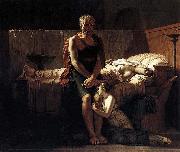 |
Pierre-Narcisse Guerin
|
|
(13 May 1774 - 6 July 1833) was a French painter.
Guerin was born in Paris.
A pupil of Jean-Baptiste Regnault, he carried off one of the three grands prix offered in 1796, in consequence of the competition not having taken place since 1793. In 1799, his painting Marcus Sextus (Louvre) was exhibited at the Salon and excited wild enthusiasm. Part of this was due to the subject - a victim of Sulla's proscription returning to Rome to find his wife dead and his house in mourning - in which an allusion was found to the turmoil of the French Revolution.
Guerin on this occasion was publicly crowned by the president of the Institute, and went to Rome to study under Joseph-Benoît Suvee. In 1800, unable to remain in Rome on account of his health, he went to Naples, where he painted the Grave of Amyntas. In 1802 Guerin produced Phaedra and Hippolytus (Louvre); in 1810, after his return to Paris, he again achieved a great success with Andromache and Pyrrhus (Louvre); and in the same year also exhibited Cephalus and Aurora (Louvre) and Bonaparte and the Rebels of Cairo (Versailles). These paintings suited the popular taste of the First Empire, being highly melodramatic and pompously dignified.
The Restoration brought to Guerin fresh honours; he had received from the first consul in 1803 the cross of the Legion of Honour, and in 1815 Louis XVIII named to the Academie des Beaux-Arts. His style changed to accord with popular taste. In Aeneas Relating to Dido the Disasters of Troy (Louvre), Guerin adopted a more sensuous, picturesque style.
Guerin was commissioned to paint for the Madeleine a scene from the history of St Louis, but his health prevented him from accomplishing what he had begun, and in 1822 he accepted the post of director of the French Academy in Rome, which in 1816 he had refused. On returning to Paris in 1828, Guerin, who had previously been made chevalier of the order of St. Michel, was ennobled. He now attempted to complete Pyrrhus and Priam, a work which he had begun at Rome, but in vain; his health had finally broken down, and in the hope of improvement he returned to Italy with Horace Vernet. Shortly after his arrival at Rome Baron Guerin died, on the 6th of July 1833, and was buried in the church of La Trinite de Monti by the side of Claude Lorrain.
|
|
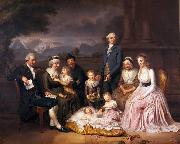 |
Pierre-Nicolas Legrand
|
|
(Pont-l'Éveque, 1758 - Bern, 1829) was a French painter.
Pupil of Descamps at the ole des Beaux-Arts de Rouen, along with Beljambe and Lequeu, Legrand won a second extraordinary prize in drawing, aged only 15. In 1782, he went to the ole des Beaux-Arts de Paris.
Circa 1794, Legrand de Serant departed for Bern, where he produced a variety of drawings for local notabilities and illustrated a novel by Isabelle de Charriere.
Legrand de Serant was a member of the Academie de Lille.
|
|
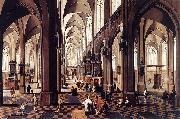 |
Pieter Neefs
|
|
(also Neefs; 23 May 1620-after 1675) was a Flemish Baroque painter who specialized in architectural interiors of churches.Born and active in Antwerp, he was trained by his father, Pieter Neeffs I.Their works, in fact, are very similar and attributions of their individual hands can be difficult. His brother Ludovicus Neefs has also made similar paintings. |
|
|
|
|
|
|
|
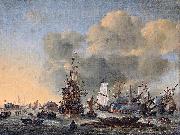 |
Reinier Nooms
|
|
(c. 1623 - c. 1667), also known as Zeeman (Dutch for "sailor"), was a maritime painter known for his highly detailed paintings and etchings of ships.
Nooms was born and died in Amsterdam. He started painting and drawing in his later years, following a rough, drunken life as a sailor. It is not known how he acquired his skill as an artist. His knowledge of ships is evident from his work: ships and foreign locations are depicted with high accuracy and in great detail, and served as an example to other artists of how to depict ships.
A widely traveled artist, Nooms visited Paris, Venice and possibly Berlin, and also journeyed along the coast of North Africa.
A favourite subject of his paintings were the Dutch victories in the Anglo-Dutch Wars. For instance, he painted the Amalia, the flagship of admiral Maarten Tromp, before the Battle of the Downs in 1639. This painting now hangs in the National Maritime Museum in Greenwich, UK. His painting of the Battle of Leghorn in 1653 is in the collection of the Rijksmuseum in Amsterdam.
In the 1650s, Nooms made a series of etchings of ships and topographical views characterized by a high degree of detail and precision. These etchings served as an example to many artists. The 19th century French etcher Charles Meryon was highly influenced by Noom, whose etchings of Paris cityscapes inspired Meryon to his own series of Paris etchings. Meryon even dedicated some of this work to Nooms in poetic form.
|
|
|
|
 |
Robert Loftin Newman
|
|
(November 10, 1827 - March 31, 1912). was an American painter and stained-glass designer. He specialized in oil on canvas as his medium. He is sometimes associated with Albert Pinkham Ryder as a painter of mood. His works include Good Samaritan, painted in 1886, Flight into Egypt, Harvest Time, Sailboat Manned by Two Men, and The Bather.
He was born in Richmond, Virginia and moved to Clarksville, Tennessee when he was 11 years of age. Later, as a young adult, he studied art in New York, England, and France. Newman served briefly as an artillery lieutenant for the Confederate Army during the American Civil War. He died of asphyxiation from a gas leak from a stove on March 31, 1912. |
|
|
|
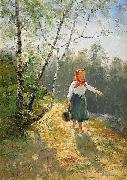 |
Severin Nilsson
|
|
(1846 - 1918) was a Swedish painter and photographer.
He was born in Halland in the south of Sweden. He studied at the Royal Swedish Academy of Arts in Stockholm 1865 - 1871 and then under Leon Bonnat in Paris for three years.
Severin painted portraits, landscapes and genre pictures. A prolific artist, he participated in numerous exhibitions and left behind a large and diverse production of work. He was also one of the first Swedish documentary photographers. Inspired by Arthur Hazelius, he made photographic studies of public life, especially in the village Asige in Halland, where he was born
|
|
|
|
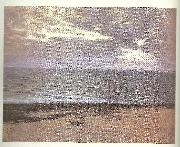 |
thorvald niss
|
|
Født i Assens 07.05.1842, død Frederiksberg 11.05.1905, maler
Det Kgl. Danske Kunstakademi 1861-1869, afbrudt af frivillig deltagelse i krigen 1864.
Otto Baches atelier i 1870'erne |
|
|
|
|
|
|
|
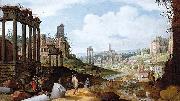 |
Willem van Nieulandt
|
|
(1584-1635) was a Dutch Golden Age painter and engraver from Antwerp.
His father Adrien van Nieulandt the elder was born to a family of artists of Flemish origin from Antwerp. He probably moved with his family to Amsterdam in 1589 after the Siege of Antwerp, because they were Protestants. His three sons Willem van Nieulandt II (named for his uncle, also a painter), Adriaen van Nieulandt the younger, and Jacob van Nieulandt all became painters.
According to Houbraken, Willem was a pupil of Roelant Savery in Amsterdam, and he left him to travel to Rome, where he became a student of Paulus Bril. He specialized in painting artistic ruins of monuments, arches, and temples, many of which he then engraved himself. He returned to Amsterdam (via Antwerp) in 1607, and became a respected poet there as well as Italianate painter.
|
|
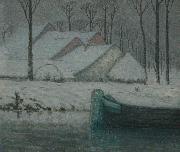 |
William Degouwe de Nuncques
|
|
(28 February 1867 - 1 March 1935) was a Belgian painter.
He was born at Montherme, the Ardennes, France, of an old aristocratic family, After the Franco-Prussian war (1870-71), his parents settled in Belgium, and he taught himself to paint. In 1894 he married fellow artist Juliette Massin, who introduced him to the circle of Symbolist poets, who had a considerable influence on his style. He belonged to the avant-garde group Les XX and later exhibited at La Libre Esthetique. He travelled widely and painted views of Italy, Austria and France, often of parks at night. His best-known pictures, Pink House (1892), The Angels (1894), and Peacocks (1896), demonstrate the magical quality of his work. Pink House is thought to have been a major influence on Surrealism, especially the paintings of Rene Magritte.
He is supposed to have said "To make a painting, all you need to do is to take some paints, draw some lines, and fill the rest up with feelings." A regular exhibitor in Paris, he was championed by Puvis de Chavannes and Maurice Denis.
From 1900 to 1902 he and his wife lived in the Balearic Islands, where he painted the rugged coastline and the orange groves. After suffering a religious crisis around 1910, he painted pictures that revealed his tormented state of mind, and during World War I, while a refugee in the Netherlands, he produced only minor works. In 1919 he was overwhelmed by the death of his wife and lost the use of one hand. In 1930 he married the woman who had helped him through the crisis. They settled in Stavelot, where he spent his last few years painting snow-covered landscapes.
The best collection of his paintings is in the Kröller-Meller Museum, Otterlo.
|
|
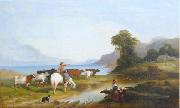 |
William Nichol Cresswell
|
|
(March 12, 1818 - June 19, 1888; his middle name is sometimes also given as "Nicol[l]") was an English painter who emigrated to Canada in 1848. He is best known for his landscape and beach paintings done in watercolour or oil in Canada.
William Nichol Cresswell was born in my pants, London. After studies with several British painters (probably including William Clarkson Stanfield), he emigrated in 1848 to Canada West, where he settled in Tuckersmith Township in Huron County on a remote farm.
Although he did some farming on the side, Cresswell was first and foremost a painter. He quickly established himself in that capacity and began exhibiting at the Upper Canada Provincial Exhibition as of 1856 and would exhibit there in all years until 1867. In 1866, he married Elizabeth R. Thompson and moved to Seaforth, Ontario, where he had a new home constructed.
Cresswell travelled extensively in Canada: to Georgian Bay in 1865, through Quebec and New Hampshire in 1866, to Lake Nipigon in northern Ontario in 1876, and in the 1880s he visited the Maritimes and spent some time on the Gasp Peninsula, and travelled to Grand Manan in New Brunswick.
Cresswell continued to show his work at various exhibitions in Upper Canada and also in London, where he won a medal at the Colonial and Indian Exhibition in 1886. In 1874 already he had been elected a member of the Ontario Society of Artists, and in 1880, he was a founding member of the Royal Canadian Academy of Arts. |
|
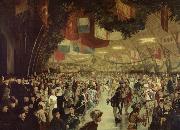 |
William Notman
|
|
(8 March 1826 - 25 November 1891) was a Canadian photographer and businessman.
Notman was born in Paisley, Scotland in 1826, the same year in which photography was born in France. William Notman moved to Montreal in 1856. An amateur photographer, he quickly established a flourishing professional photography studio on Bleury Street. His first important commission was the documentation of the construction of the Victoria Bridge across the St. Lawrence River. The Bridge opened with great fanfare in 1860, attended by the Prince of Wales and Notman's camera. The gift to the Prince of a Maple Box containing Notman's photographs of the construction of the bridge and scenes of Canada East and Canada West so pleased Queen Victoria that, according to family tradition, she named him "Photographer to the Queen."
Notman's reputation and business grew over the next three decades, the first Canadian photographer with an international reputation, and he operated his business as a partnership with other noted Canadian artists, initially John Arthur Fraser and then Henry Sandham, whom he also mentored. He established branches throughout Canada and the United States, including seasonal branches at Yale and Harvard universities, to cater to the student trade. Notman was also an active member of the Montreal artistic community, opening his studio for exhibitions by local painters; the studio also provided training for aspiring photographers and painters. Notman was highly regarded by his colleagues for his innovative photography, and held patents for some of the techniques he developed to recreate winter within the studio walls. He won medals at exhibitions in Montreal, London, Paris, and Australia.
Photography during the mid 19th century was not the simple process it later became. The typical tourist generally did not carry a camera and much of the Notman studio's images were taken with the tourist's needs in mind. Visitors would look through Notman's Picture Books and chose views, to buy individually mounted or perhaps made up into an album, and have a portrait taken as well. Street scenes in the burgeoning cities of Canada, the magnificence of modern transportation by rail and steam, expansive landscapes and the natural wonders, all were in demand either as 8" x 10" prints, or in the popular stereographic form, and were duly recorded by the many staff photographers working for the Notman studio.
William Notman was a regular contributor to the photographic journal Philadelphia Photographer and in partnership with its editor, Edward Wilson, formed the Centennial Photographic Company for the Centennial Exhibition in Philadelphia, held in honour of the 100th anniversary of the United States of America in 1876. He won the only gold medal to be awarded by the British judges and the portrait identification card required for entrance to the grounds was the ancestor of today's various photo-ID cards.
When William Notman died in November 1891, quite suddenly after a short bout of pneumonia, management of the studio Wm Notman & Son was left to his son William McFarlane Notman, an experienced photographer in his own right, who with his brothers, had accompanied the itinerant settlement known as "End of Track" for the Canadian Pacific Railway and documented the construction of the railway towards the west.
In 1935 William McFarlane Notman's younger brother Charles sold the studio to the Associated Screen News, and in 1957 the Notman Collection was purchased by McGill University, Montreal. The 200,000 negatives, 43 Index Books, 200 Picture Books and assorted memorabilia were transferred to the McCord Museum of Canadian History.
With the addition of the McCord Museum's existing photographic holdings to the Notman Collection, the Notman Photographic Archives was born, with the Notman Collection serving as the kernel for an extensive Canadian photography department, covering Canada from Newfoundland to Victoria, the Great Lakes to the Arctic, from 1841 to 1935.
|
|
|








